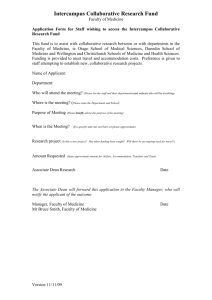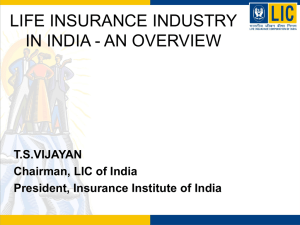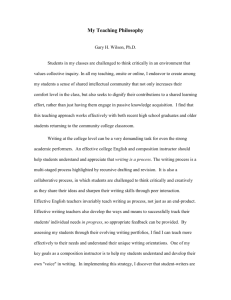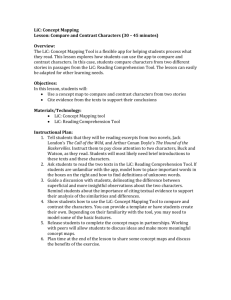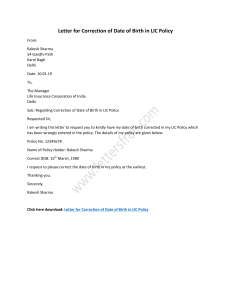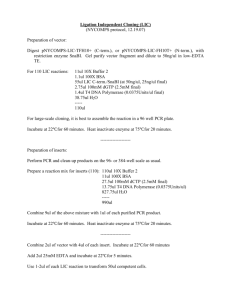COURSE ABSTRACT
advertisement
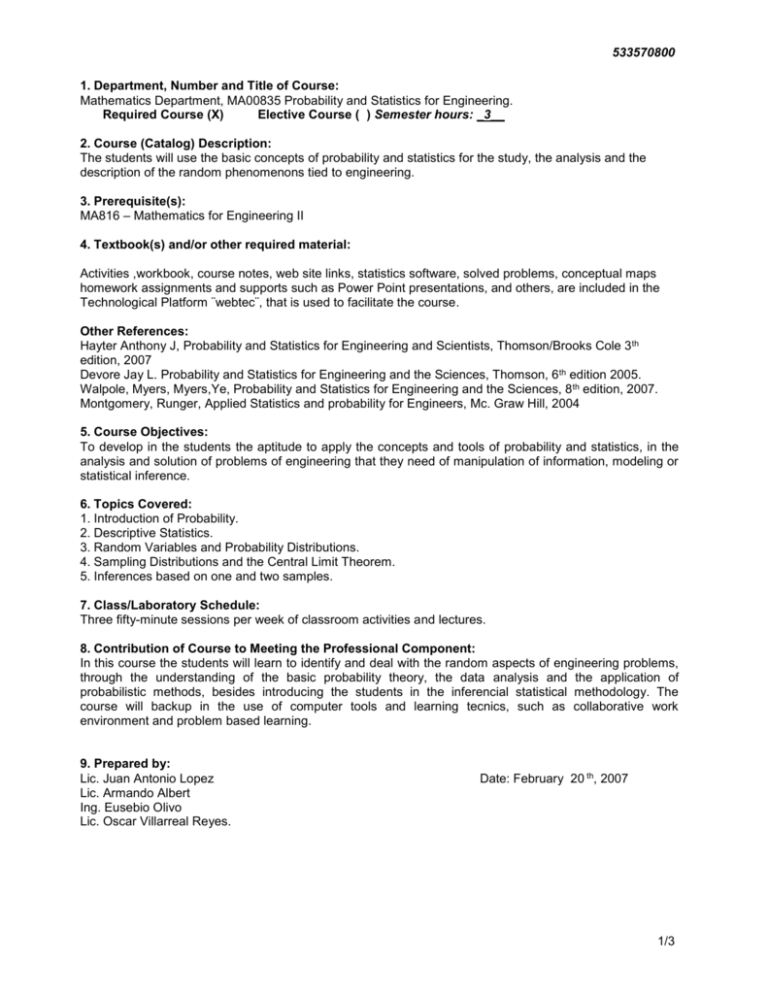
533570800 1. Department, Number and Title of Course: Mathematics Department, MA00835 Probability and Statistics for Engineering. Required Course (X) Elective Course ( ) Semester hours: _3__ 2. Course (Catalog) Description: The students will use the basic concepts of probability and statistics for the study, the analysis and the description of the random phenomenons tied to engineering. 3. Prerequisite(s): MA816 – Mathematics for Engineering II 4. Textbook(s) and/or other required material: Activities ,workbook, course notes, web site links, statistics software, solved problems, conceptual maps homework assignments and supports such as Power Point presentations, and others, are included in the Technological Platform ¨webtec¨, that is used to facilitate the course. Other References: Hayter Anthony J, Probability and Statistics for Engineering and Scientists, Thomson/Brooks Cole 3 th edition, 2007 Devore Jay L. Probability and Statistics for Engineering and the Sciences, Thomson, 6 th edition 2005. Walpole, Myers, Myers,Ye, Probability and Statistics for Engineering and the Sciences, 8 th edition, 2007. Montgomery, Runger, Applied Statistics and probability for Engineers, Mc. Graw Hill, 2004 5. Course Objectives: To develop in the students the aptitude to apply the concepts and tools of probability and statistics, in the analysis and solution of problems of engineering that they need of manipulation of information, modeling or statistical inference. 6. Topics Covered: 1. Introduction of Probability. 2. Descriptive Statistics. 3. Random Variables and Probability Distributions. 4. Sampling Distributions and the Central Limit Theorem. 5. Inferences based on one and two samples. 7. Class/Laboratory Schedule: Three fifty-minute sessions per week of classroom activities and lectures. 8. Contribution of Course to Meeting the Professional Component: In this course the students will learn to identify and deal with the random aspects of engineering problems, through the understanding of the basic probability theory, the data analysis and the application of probabilistic methods, besides introducing the students in the inferencial statistical methodology. The course will backup in the use of computer tools and learning tecnics, such as collaborative work environment and problem based learning. 9. Prepared by: Lic. Juan Antonio Lopez Lic. Armando Albert Ing. Eusebio Olivo Lic. Oscar Villarreal Reyes. Date: February 20 th, 2007 1/3 533570800 Additional Information Oral and Written Communications The course is designed of such form that promotes the active participation of the student during all the session of class; utilizing the technique of the question the student gives his contributions in class and him transcribe in the book of text or material of support designed for this objective. Some of the activities of the course consist of reports of reading of the theme that is going to study itself in class, where the student should read and to answer what he understood, describing it with its own words; with this the oral communication is promoted and written. Theoretical Content Please list the types of theoretical material covered, and estimate you the time devoted to such coverage. 1. Functions: representation and analysis (7 weeks = 21 hours class) Function Concept 1.1 (2 hours) 1.2 Lineal Function (3 hours) 1.3 Function power (1 hour) 1.4 Function exponential with base "to" (4 hours) 1.5 Function exponential with base "and" (2 hours) 1.6Inverse function (1hour) 1.7 Functions logarithmic (2 hours) 1.8 Operations with functions(2 hours) 1.9 Effects in the graphic of a function (2 hours) upon adding, to reduce or to multiply a constant one 1.10Función polynomial(2 hours) 2. The Derived (4 weeks = 12 hours class) 2.1 instant reason of change (1 hours) 2.2 Derived by graphic (2 hours) 2.3 Formulae and properties of it derived (6 hours) 2.4 Reason of change of a function and Straight Tangents(1 hour) 2.5 Interpretation in practical terms (2 hours) of it derived 3. Optimization of functions (2 weeks = 5 hours class) 3.1 Maximums and most minimum relative of a function and applications (3 hours) 3.2 Concavity and points of inflection (2 hours) Collaborative Skills The course has designed activities that work themselves in form Collaborative, some they are divided into three parts that they work themselves first in individual form and they carry out it out of class, and in the following session themselves reunions in equipment to learn in form collaborative the theme that developed with the activity. Other activities are job in classroom, resolving some problem and then to share their knowledge with their companion of equipment., of such way that among them they are explained and they complement their knowledge. Indicate if the course has a significative design content Yes List examples of evidences such ace homework sets, projects, marry, studies and exams developed by students (collect and keep low, medium and 2/3 533570800 high performances please). 1. Investigation of the real life, that involves search of information, solution of problems, analysis and reflection. 2. Exams, where a part of reflection upon the mathematical concepts is included 3. The tasks that have the purpose of reinforcing it learned in class 4. Prior reports of reading to the class for the purpose of that arrive at class with a minimum of knowledge and they can participate actively. The course distribution is: 90% lecture and 10% recitation. 3/3




